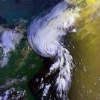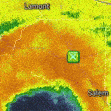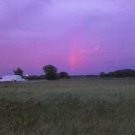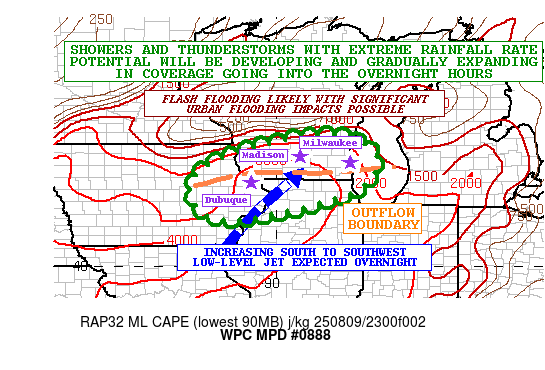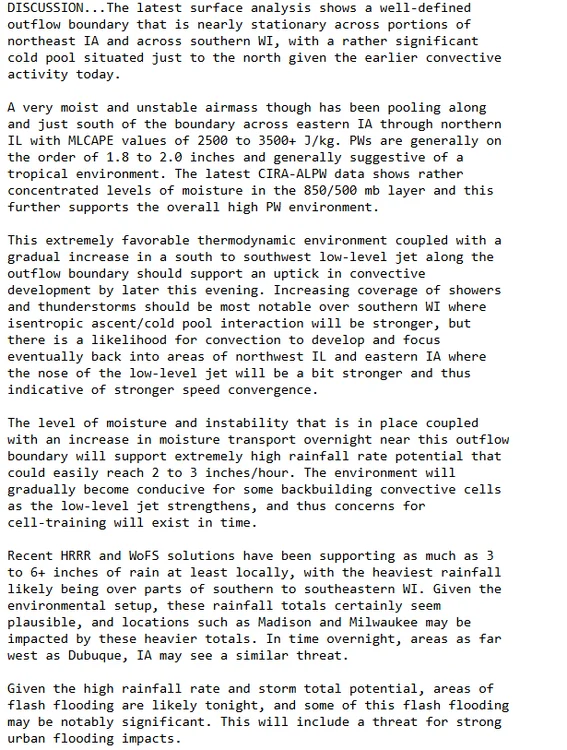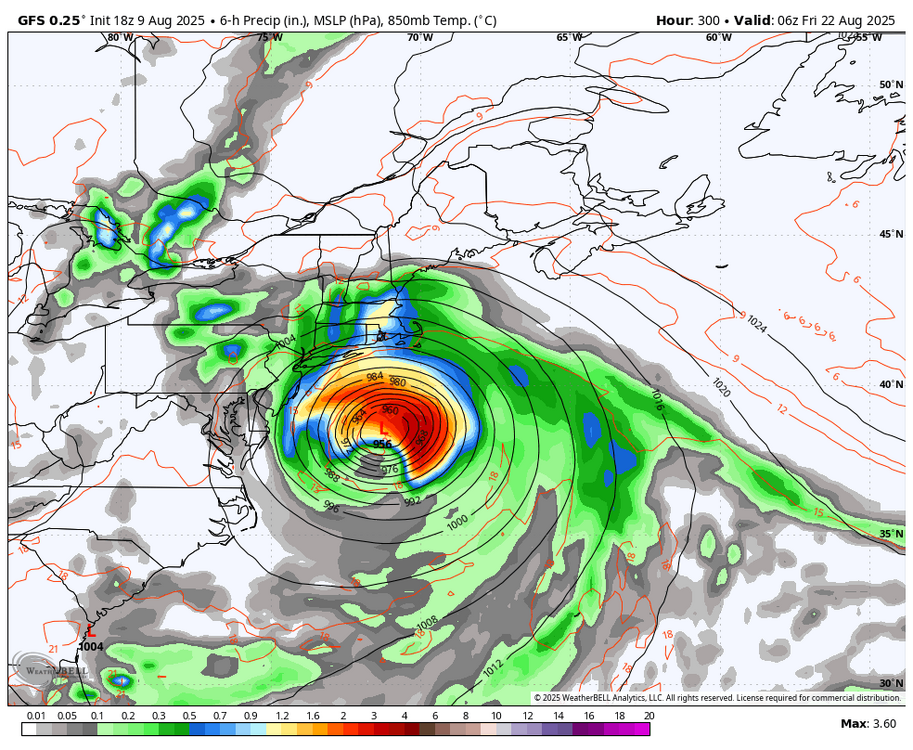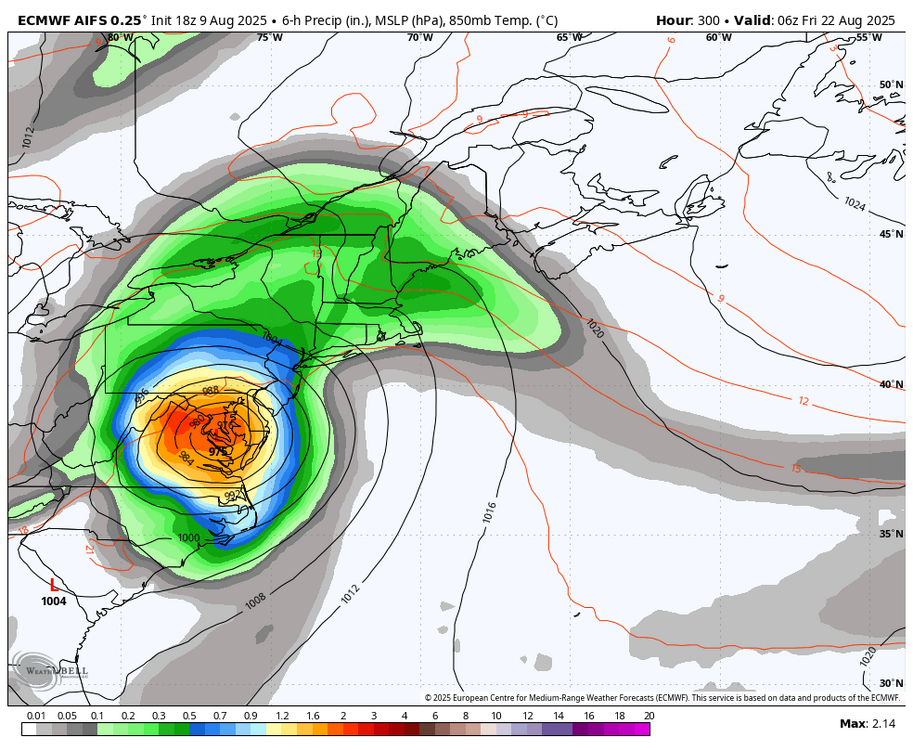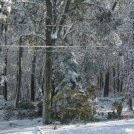All Activity
- Past hour
-
I'm not a big tropical tracker but this set-up is a like a day 10 blizzard. Certainly not a hallucination but currently modeled upper air patterns are tenuous.
-
According to history this is the sweet spot for a NE hurricane with big blocking.
-
Sounds like the last 75 years. It won’t happen till it happens wink wink
-
This is a Hatteras head fake and then 300 miles East of Chatham. Ridge placement will lock in this week and then weenie dreams will fade.
-
Back from a nice week on the Cape. A little smoky and cloudy to start but last few days were stellar.
-
This week is gonna' be hot. Dew points look tolerable for most of the week so we AC by day and window fans by night. We'll see how September goes but get out and enjoy the heat while it's here. Go Swim!
- Today
-
Occasional Thoughts on Climate Change
blizzard1024 replied to donsutherland1's topic in Climate Change
My issue for many many years is that CO2 levels during the glacial to interglacial periods lagged the inferred temperatures from Oxygen Isotope Ratios by up to 1000 years. This suggests strongly that it's the oceans outgassing and absorbing CO2 that is leading to these changes in CO2 and not CO2 driving the climate. Plus, one small absorption band around 15 microns is very small compared to water vapors much larger absorption in the IR spectrum. A doubling of CO2 leads to about a 1% change in energy balance. How does that equate to 4.8C? Even 2-3C seems farfetched. All of this work is based on computer modeling and proxy records which are not definitive. What about tropical convection? This has a huge impact on the global energy balance. Climate models don't explicitly predict this. Anyway, I have been trying hard to come around to the mainstream on this and my skeptical mind won't let me. I guess my main sticking points are the ice core records, the small change in energy balance from a doubling of CO2, Earth is coming out of a little ice age and the small absorption band of CO2 relative to H20. Anyway, I do agree that we shouldn't pollute the atmosphere at all and should be weaning off of fossil fuels for cleaner sources of energy. So at the end of the day, I may not agree with the doomsday warming scenarios but I agree with you on what the world needs to do for the future. -
If you want a really good illustration of what happens when there is no gap in a mountain range, then the Bitterroot Valley is your huckleberry. Take some time and look at the annual snow totals for Hamilton and also at their winter temps. Then, look at Missoula's. Different worlds and only about 30mins apart. We nearly moved here, so I had done a lot of research about the valley. They used to grow apples in that valley. It is a true banana belt. The downlsope winds keep it warm for most of the winter. There are few ways for cold air masses to get south into the valley. Just of this area gets bitterly cold during winter. The eastern TN Valley is similar to this in many ways.
-
That also means the airport deals with downslope winds that Knoxville and western burbs don't see nearly as much.
-
Pay attention to the super ensemble
-
I tend to lean towards the idea that AMO cycles flipped around 1990. We are due for it to reverse. As John noted last winter, there is some debate as to whether the AMO actually exists. I think the big change is that we finished a -AMO cycle during the late 1900s, and that greatly changed our weather in E TN. We also really need the -NAO in E TN to have decent shots at Nor'Easters. That is a different answer for the Plateau westward where the PDA/PNA ridge complex matters tremendously. There were some crazy strong El Nino's during the 90s. Right now we are in a pattern of La Ninas which I believe is driving the weather pattern here and placing the default NA trough over the Mountain West during many winters. Eventually, the pattern will change to something entirely different. La Nina is not great for the coast. It is weird, but TRI is kind of linked to DC's pattern. When it is snowy there, it is often snowy here. TRI generally does poorly in La Nada's and moderate to strong La Nina's. Strong El Ninos are torch city as well. We also have a wicked bad rain shadow here. Lately, downsloping over the eastern Foothills has been a problem. We are feast or famine up here. We generally do well w/ inland runners, sliders, NW flow, and a once in a decade setup where a low stalls/forms in the lee of the Apps. But trajectory of each system matters greatly. A slider with nearly perfect east-west trajectory is no good here. We need it to bend NE just a hair. The missing piece during recent winters are Alberta clippers. I believe the lack of clippers is probably directly correlated to the lowering snow totals. Joe Bastardi (who I like when he talks historical weather patterns) says that it snows where it wants to snow. During some winters, it just snows more here regardless of the pattern. He also notes there is a connection between late season cold and late hurricane action. One other JB note is that if a place has a rainy fall, that is generally where cold will try to setup. Those are fairly sound observations which have merit. Also as John notes, we generally hit big winters in cycles.
-
Agree. It needs to be hugging or very near the Antilles.
-
I’m THIS close to buying every milk carton within a 10 mile radius
-
Even though it’s looking back at 12z, the super ensemble is probably most useful tool right now. It also gives a good window into where predictability ends and weenie range begins.
-
Oh, man. That isn't good. I have the same recollection of that year.
-
-
MJO812 changed their profile photo
-

2025 Spring/Summer Mountain Thread
Tyler Penland replied to Maggie Valley Steve's topic in Southeastern States
Nice! My best friend lives in Billings and I went out to see him. We hiked Mt Rearguard which was my first hike up to a 12kft peak (and highest significant hike over 9k). The elevation absolutely whooped my butt but it was worth it. The first night in Yellowstone there was a tinge of frost on the meadow and we dropped to 33/34º, super super nice. I got off the plane on my second, and unplanned, connection in DC from Denver and the humidity hit me in the face for the first time in a week. No fun. -
It is going to be a long night for S WI for rain/flooding. Already a rare FFW out for Milwaukee and West Allis (On State Fair weekend no less!) with 2.5"+ hrly totals. And WPC just put out a pretty strongly worded MPD for the area.
-
I don't know if a rookie manages to break that...maybe? Lol They been doing this crap all year! All early hit then quiet...the whole hitting philosophy needs to be overhauled. I hope this ain't an Elias issue...he oughta let the new manager pick his staff.
-
No hits since the first 3 batters of the game.
-
-

Occasional Thoughts on Climate Change
donsutherland1 replied to donsutherland1's topic in Climate Change
That post was from six years ago. Science has continued to advance since then. Confidence in the anthropogenic driver for the current warming has increased since then. The general ideas from that post remain largely accurate and have stood up quite well. That's a testament to the scientific work on which they were based. In general, credible science holds up over time, especially when basic physics is involved. The properties of CO2 have been understood since the 19th Century. There is some nuance as it applies to central Antarctica where the surface is typically colder than the stratosphere. One paper suggests that there is a "negative greenhouse effect" that is unique to that region. The paper also makes clear that this is an exception that does not raise serious questions about the role of greenhouse gases in the warming of the Earth's climate. The paper states: It is important to note that these results do not contradict the key statements of the Intergovernmental Panel on Climate Change (IPCC) ..., namely, the well-known warming effect that CO₂ has on the Earth’s climate. Yet we showed that for the cold Antarctic continent some care needs to be taken when discussing the direct warming effect of CO₂. CO2 has not doubled from the pre-industrial level (it reached 430 ppm earlier this year vs. the pre-industrial figure of around 270 ppm -280 ppm). There are numerous feedbacks. Aerosols have gained some increased attention recently from some work by Hansen et al. The reduction in aerosols has limited the masking of warming and likely contributed, in part, to the recent acceleration in the rate of warming. A reduction in aerosols likely also contributed to the cloud-related changes that have been observed, but paleoclimate work suggests that more than aerosol changes are involved. A growing body of evidence strengthens the argument that clouds have a positive feedback, namely that at higher CO2 levels, cloud-related changes amplify the warming. Back in 2019, there were some who still argued that clouds would be a negative feedback and help reduce the rate of warming. That idea has now largely lost merit. Paleoclimate work by Jessica Tierney among others revealed that cloud-related changes at higher levels of CO2 enhanced warming. Recent data from NASA confirms changes to clouds consistent with promoting increased warming. Indeed, even more recent research on climate sensitivity has suggested that perhaps the CMIP6 models weren't "running hot" as initially thought, but that they might be doing a better job capturing cloud-related changes. A new paper, aside from Hansen's recent work, has suggested that climate sensitivity for a doubling of CO2 may be around 4.8°C based on the Pliocene Epoch. I'm not yet sold on that, but am open to this idea. I didn't state or suggest that the climate system will spiral out-of-control so to speak from ongoing anthropogenic warming. No runaway greenhouse effect is likely on Earth. That won't happen until the sun starts moving into its red giant phase as it begins to exhaust its hydrogen and begins to boil away the oceans. My point is that clear scientific understanding of climate change now exists concerning what is happening (warming) and why it is happening (antropogenic greenhouse gas emissions). The scientific debate over those two issues is finished. No credible alternative hypothesis exists. Nevertheless, that does not mean that there is anything close to perfect understanding. There remain some uncertainties, but those don't rise to the level of undermining the basic idea of anthropogenic warming. Feedbacks are real. Some amplify the warming as CO2 increases, while others damp the warming. Climate change has increased the frequency, magnitude, and duration of extreme heat events in the United States and worldwide. Evidence suggests that quasi-resonant amplification is contributing to the kind of "stuck patterns" that have led to long-duration severe heat outbreaks in parts of North America, Europe, Asia, and Africa, among other extreme events. Recent research also suggests that Pacific-related changes are creating a negative PDO-type scenario, which is contributing to the Southwest's growing hotter and drier. Finally, internal variability occurs within the context of increasing anthropogenic greenhouse gas forcing. Thus, there can be cold periods, including cold winters. Synoptic events also occur within the context of increasing anthropogenic forcing, so climate change impacts such events but does not necessarily cause them. Second order effects can see climate change driving changes in synoptic scale events e.g., aridification of regions can feed back into the development of more persistent and larger heat domes. -
Bob esque here. Had 60-70gusts

.thumb.png.4150b06c63a21f61052e47a612bf1818.png)
